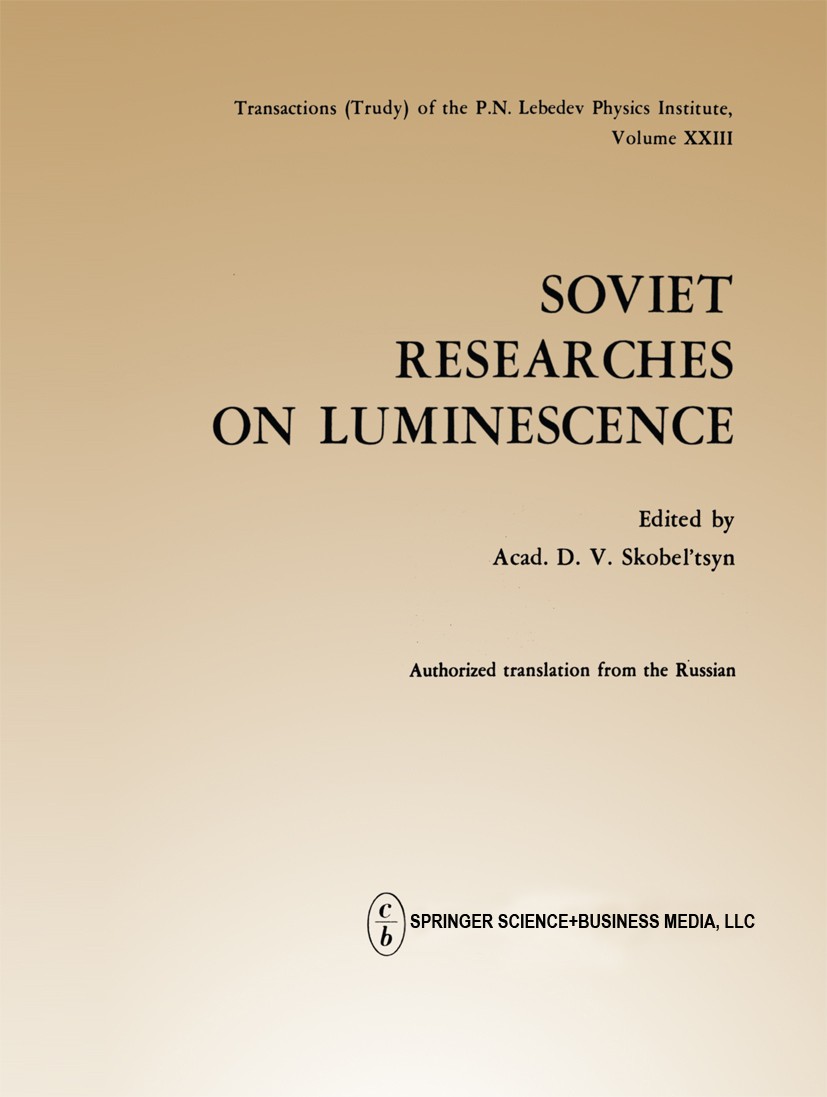| 书目名称 | Soviet Researches on Luminescence | | 编辑 | D. V. Skobel’tsyn | | 视频video | http://file.papertrans.cn/873/872273/872273.mp4 | | 丛书名称 | The Lebedev Physics Institute Series | | 图书封面 |  | | 描述 | It is well known that luminescence is the term used to describe the excess radiation from a body over and above the thermal radiation and persisting for a time which greatly exceeds the period of a light vibration. The first half of this definition, proposed by Wiedemann, distinguishes luminescence from equilibrium thermal radi ation; the second half, introduced by Vavilov, distinguishes luminescence from various forms of scattering and from induced radiation, such as Vavilov-Cherenkov radiation, etc. Distinctions are made between photo-, cathodo-, x-ray-, and other forms ofluminescence, depending on how energy is introduced into the luminescent body. Electroluminescence is the name given to that form of fluorescence in which the radiating body receives energy directly from an electric field. It should be noted that luminescence under the influence of cathode rays is not called electroluminescence, because in this case the necessary energy is not supplied directly from the electric field to the radiating body but by means of extraneous electrons. Electroluminescence of gaseous bodies (radiation from a gas discharge) has been known for a long time and is widely used in luminescent | | 出版日期 | Book 1964 | | 关键词 | Cherenkov radiation; Vibration; X-ray; crystal; electroluminescence; electron; electrons; energy; fluorescen | | 版次 | 1 | | doi | https://doi.org/10.1007/978-1-4615-8546-6 | | isbn_softcover | 978-1-4615-8548-0 | | isbn_ebook | 978-1-4615-8546-6 | | copyright | Consultants Bureau Enterprises, Inc. 1964 |
The information of publication is updating

|
|
 |Archiver|手机版|小黑屋|
派博传思国际
( 京公网安备110108008328)
GMT+8, 2025-12-17 23:23
|Archiver|手机版|小黑屋|
派博传思国际
( 京公网安备110108008328)
GMT+8, 2025-12-17 23:23


